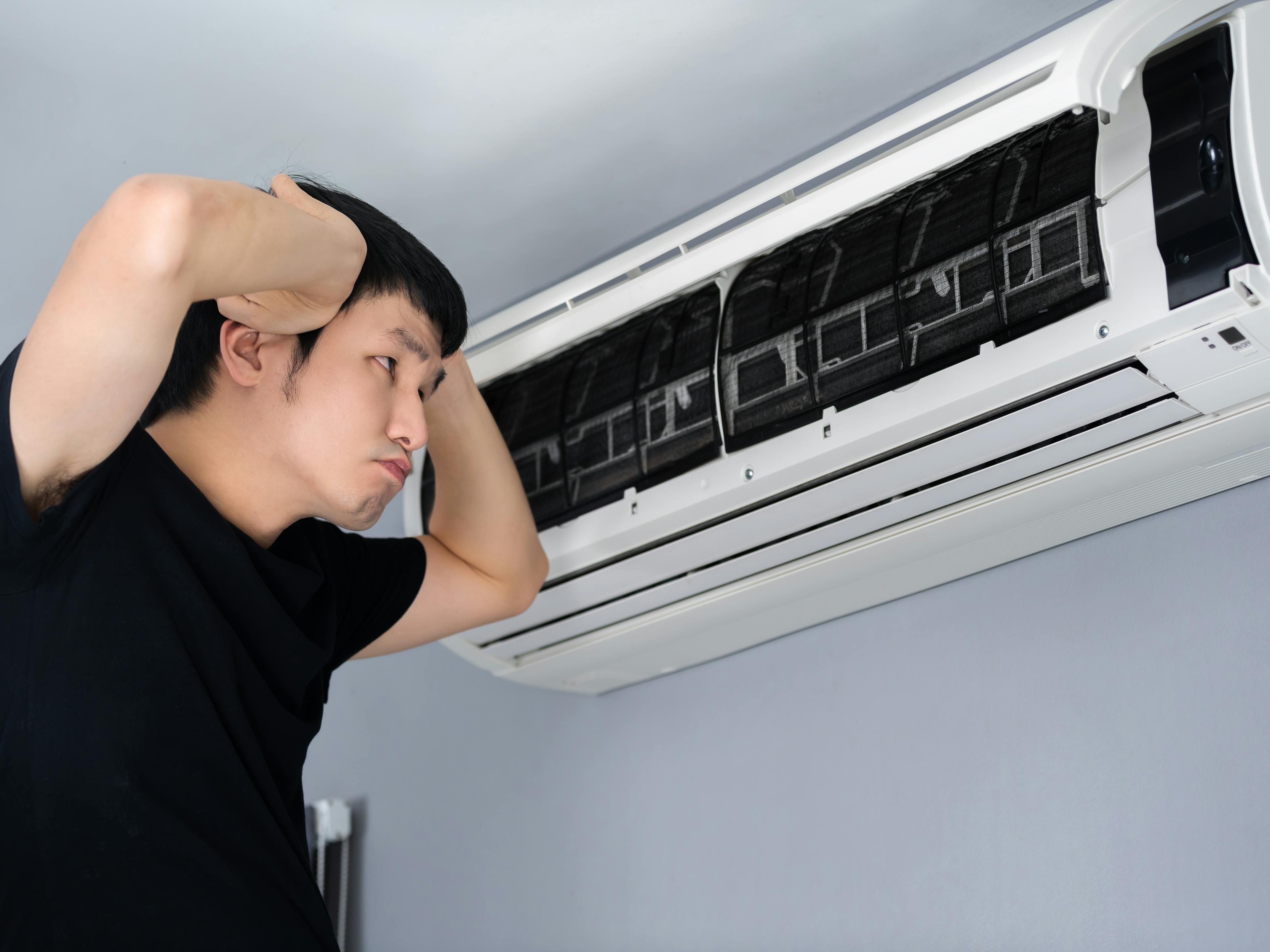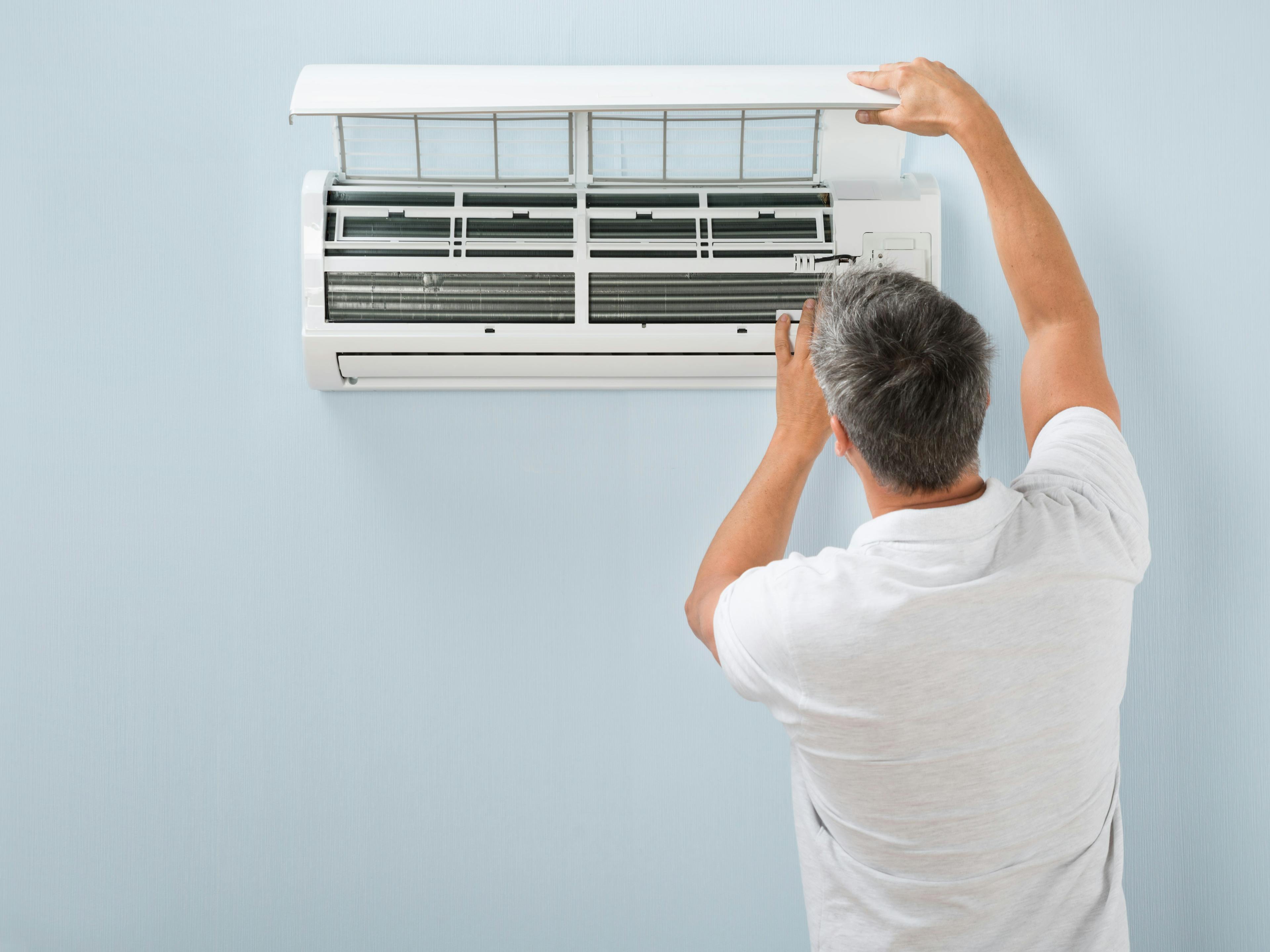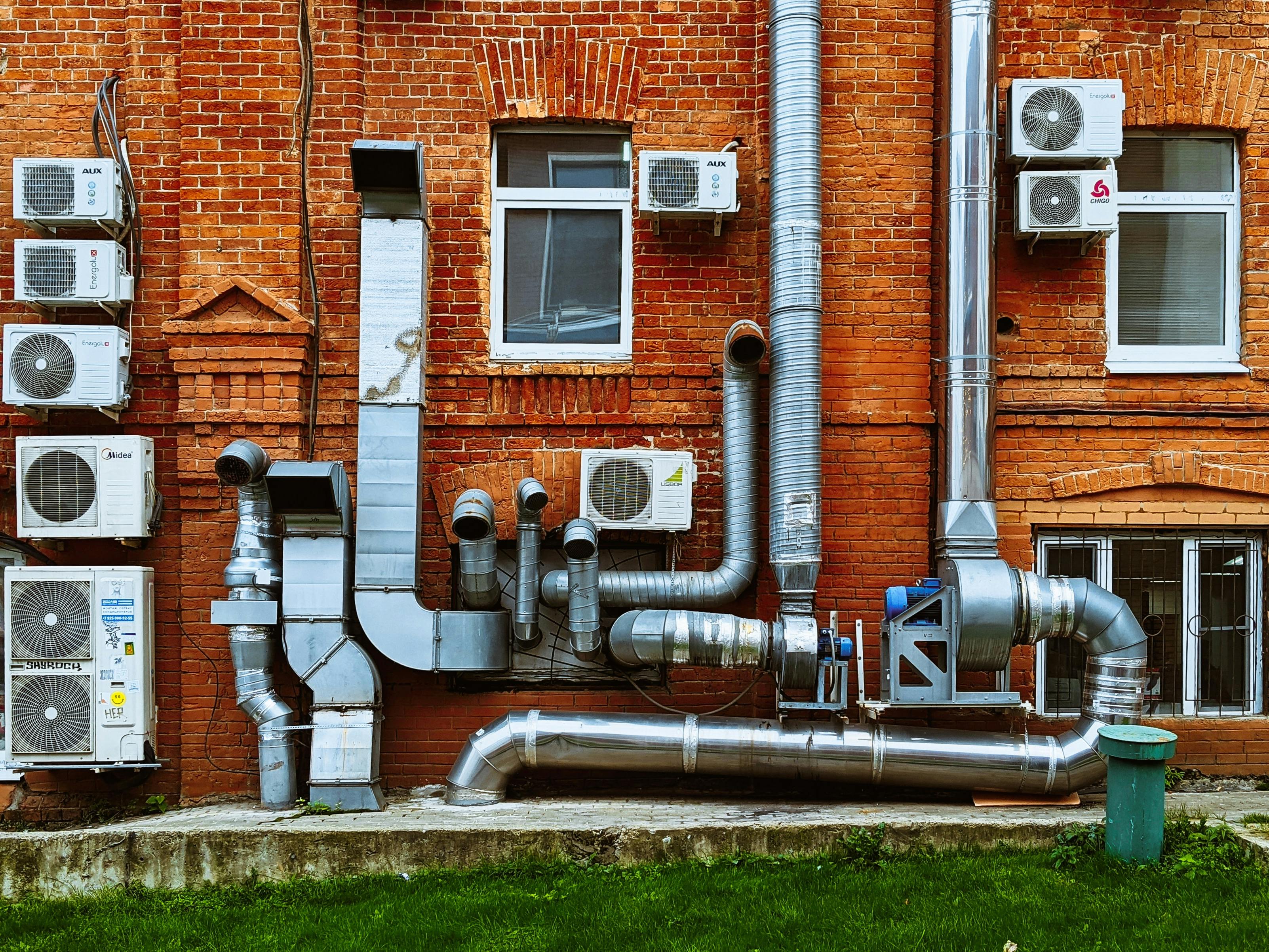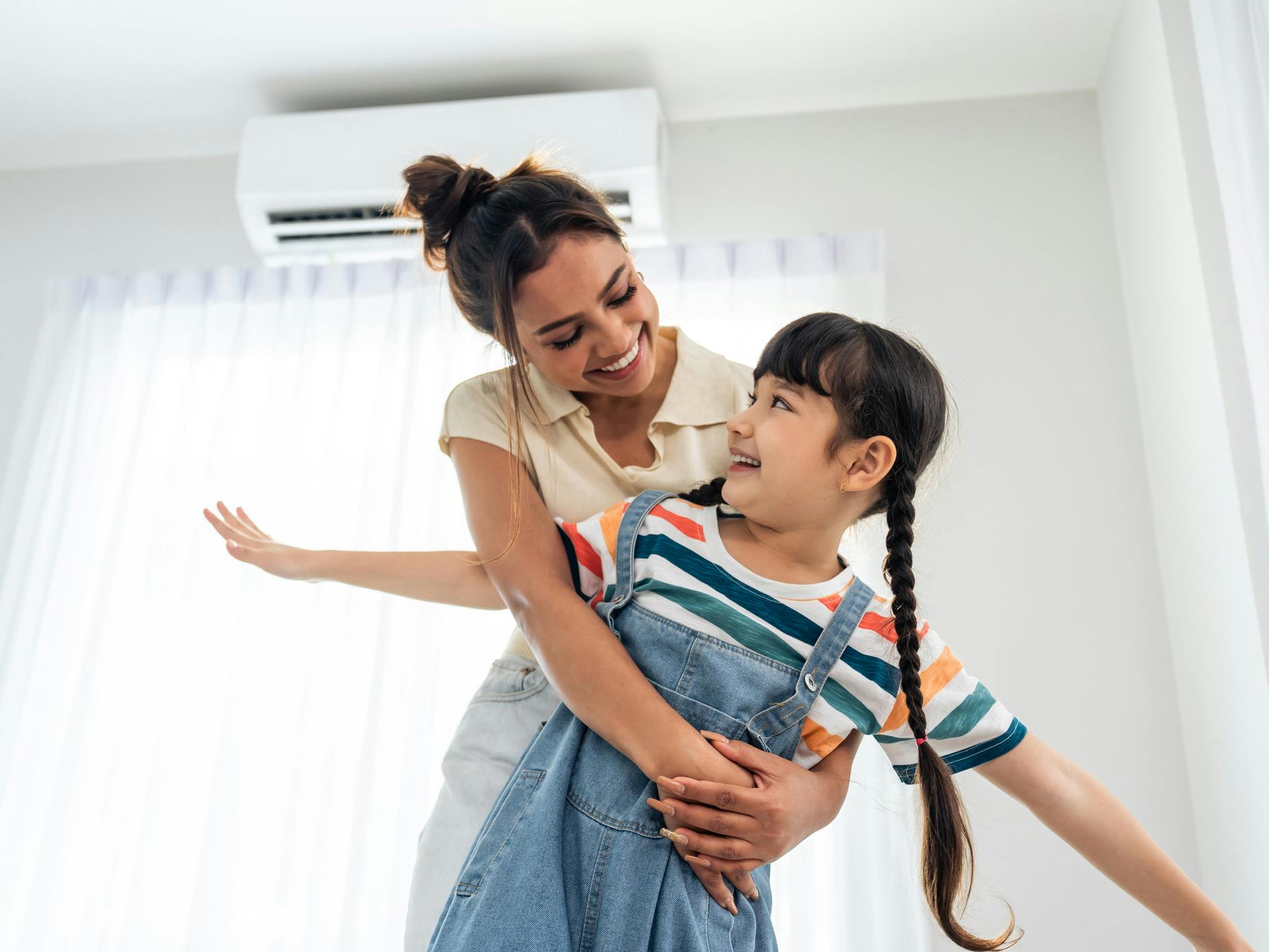10 Common HVAC Problems and How to Troubleshoot Them

When it comes to your HVAC system, encountering problems is inevitable. However, with a solid understanding of common issues and the ability to troubleshoot them effectively, you can maintain optimal performance, energy efficiency, and a comfortable indoor environment. In this comprehensive guide, we will delve into ten of the most common HVAC problems that homeowners face and provide expert troubleshooting solutions to help you overcome them like a pro.
Your HVAC system is responsible for keeping you warm in the winter and cool in the summer. But when issues arise, such as uneven heating or cooling, insufficient airflow, or a system that won't turn on, it can quickly turn into a source of frustration. That's why it's crucial to equip yourself with the knowledge and skills to identify and resolve these problems promptly.
By understanding the underlying causes and employing effective troubleshooting techniques, you can save both time and money by addressing these issues on your own or knowing when to seek professional assistance. Additionally, maintaining a well-functioning HVAC system will not only enhance your comfort but also contribute to energy efficiency, lower utility bills, and a longer lifespan for your equipment.
Throughout this guide, we will provide detailed explanations of each problem, accompanied by step-by-step troubleshooting solutions. From uneven heating or cooling to high energy bills and water leaks, we will cover a wide range of issues that can affect your HVAC system. By following the expert advice provided, you will be able to diagnose the problem, implement the necessary repairs or maintenance, and restore your HVAC system to its optimal state.
Remember, while some problems can be resolved through DIY troubleshooting, it's important to know your limits. If you're unsure about any step or if the problem seems more complex, it's always best to consult with a licensed HVAC technician who can provide professional assistance. Now, let's dive into the ten common HVAC problems and discover how to troubleshoot them like a pro.
Uneven Heating or Cooling:
Are you tired of experiencing uneven heating or cooling in your home, which leads to discomfort and frustration? Don't worry, as we have some expert troubleshooting solutions to help you tackle this problem effectively.
First and foremost, maintaining proper airflow is crucial. Clean or replace your air filters regularly to prevent dust and debris from accumulating and obstructing airflow. Clogged filters can significantly impact the performance of your HVAC system and result in uneven temperature distribution.
Additionally, ensure that all vents throughout your home are open and unobstructed. Closed or blocked vents can disrupt the airflow and prevent the proper circulation of heated or cooled air. By ensuring the vents are clear, you'll allow for better air distribution and more consistent temperatures.
For a more personalized and precise temperature control solution, consider implementing HVAC zoning. With HVAC zoning, you can divide your home into different zones and independently control the temperature in each area. This eliminates temperature imbalances between rooms and ensures that everyone in your household enjoys optimal comfort.
- Check the air filters: Clogged filters can restrict airflow, causing temperature imbalances. Clean or replace the filters regularly.
- Inspect the vents: Ensure that all vents are open and unobstructed to allow even distribution of heated or cooled air.
- Consider HVAC zoning: Zoning systems can help regulate temperatures in different areas of your home more effectively.
Insufficient Airflow:
Are you experiencing poor airflow in your HVAC system, which is impacting its performance and overall comfort in your home? Don't worry, we're here to help you troubleshoot and resolve this issue like a pro.
One of the primary culprits of insufficient airflow is leaks or gaps in the air ducts. Inspect your air ducts thoroughly and seal any identified leaks or gaps using professional-grade duct sealant. By addressing these issues, you can ensure that the air flows smoothly and efficiently throughout your home, improving overall system performance.
Another common cause of poor airflow is a buildup of dust and debris on the blower fan and motor. Over time, these contaminants can restrict the airflow and hinder the system's efficiency. Regularly clean the blower fan and motor to remove any accumulated dust and debris. This can be done using a soft brush or a vacuum cleaner with a brush attachment. By keeping these components clean, you'll allow for better airflow and enhance the overall performance of your HVAC system.
- Examine the air ducts: Look for any obstructions or leaks in the air ducts. Seal any leaks and clear away any debris blocking the airflow.
- Clean the blower fan and motor: Dust and debris can accumulate on the fan blades and motor, reducing airflow. Clean them carefully or consult a professional.
HVAC System Not Turning On:
Is your HVAC system failing to turn on, leaving you in the discomfort of extreme temperatures? Don't worry, we're here to guide you through the troubleshooting process to get your system up and running again.
The first step is to verify the thermostat settings. Ensure that the thermostat is set to the desired temperature and the appropriate operating mode (cooling or heating). Sometimes, incorrect settings can prevent the HVAC system from turning on. Additionally, check the thermostat batteries and replace them if necessary. Low battery power can disrupt the communication between the thermostat and the HVAC system, causing it to malfunction.
Next, check the circuit breaker or fuse box. A tripped circuit breaker or a blown fuse can cut off power supply to the HVAC system, preventing it from turning on. Locate the circuit breaker or fuse corresponding to your HVAC system and check if it has tripped or blown. If so, reset the circuit breaker or replace the blown fuse to restore power.
- Check the thermostat: Ensure that the thermostat is set to the desired temperature and is in the correct mode (cooling or heating).
- Inspect the circuit breaker: A tripped breaker can prevent the HVAC system from turning on. Reset the breaker if necessary.
Strange Noises:
Are you hearing strange and unsettling noises coming from your HVAC system? Unusual sounds can be an indication of underlying issues that require attention. Here are some expert tips to help you address these noises effectively.
First, listen carefully for any rattling, grinding, or squealing noises coming from your HVAC system. These noises often signal mechanical problems or loose components. If you notice any of these sounds, it is best to contact a professional HVAC technician for a thorough diagnosis and appropriate repairs. They have the expertise to identify the source of the noise and resolve the underlying issue to restore your system's optimal performance.
Another common source of noise in HVAC systems is dirty or clogged air filters. A dirty filter can cause whistling or whirring sounds as air tries to pass through the obstruction. Regularly clean or replace your air filters as recommended by the manufacturer to prevent these noises and maintain proper airflow. Clean filters not only improve air quality but also contribute to the overall smooth and quiet operation of your HVAC system.
Remember, unusual noises should never be ignored, as they can indicate more significant problems within your HVAC system. By promptly addressing these issues, you can prevent further damage and ensure the long-term reliability of your system.
If you hear any abnormal noises coming from your HVAC system, take action by contacting a professional and maintaining clean air filters. By doing so, you can eliminate these strange noises and enjoy a quiet and comfortable indoor environment once again.
- Listen for unusual sounds: Rattling, grinding, or squealing noises could indicate loose components or mechanical issues. Contact a professional to diagnose and fix the problem.
- Clean or replace the air filters: Dirty filters can cause whistling or whirring sounds. Cleaning or replacing them may resolve the issue.
Frequent Cycling:
Is your HVAC system cycling on and off more frequently than usual? Frequent cycling not only disrupts your comfort but can also impact energy efficiency. Follow these troubleshooting tips to address the problem effectively and restore optimal performance.
First, check the location of your thermostat. Ensure that it is correctly positioned away from any heat sources such as direct sunlight, lamps, or appliances that generate heat. Heat exposure can cause inaccurate temperature readings, leading to more frequent cycling. By relocating the thermostat to a more suitable area, you can improve temperature accuracy and reduce unnecessary cycling.
Next, pay attention to the cleanliness of your air filters. Clogged or dirty filters restrict airflow, leading to overheating of the system. Regularly clean or replace your air filters as recommended by the manufacturer to prevent this issue. Clean filters allow for proper air circulation, helping to maintain a stable temperature and prevent excessive cycling.
By implementing these troubleshooting tips, you can address the problem of frequent cycling in your HVAC system. Not only will this improve your comfort by providing more consistent heating or cooling, but it will also enhance energy efficiency and potentially reduce utility costs.
Remember, if the issue persists or if you have concerns about your HVAC system, it is always advisable to seek professional assistance. HVAC technicians have the expertise to diagnose and resolve complex problems, ensuring optimal performance and longevity of your system.
- Check the thermostat location: If the thermostat is located near a heat source or in direct sunlight, it may sense inaccurate temperatures, causing frequent cycling. Relocate the thermostat if needed.
- Inspect the air filters: Clogged filters can cause the system to overheat, leading to frequent cycling. Clean or replace the filters regularly.
High Energy Bills:
Are you experiencing high energy bills that are taking a toll on your budget? Rising energy costs can often be attributed to inefficiencies in your HVAC system and home. By following these steps, you can improve energy efficiency and reduce your monthly bills.
First, evaluate the insulation in your home. Poor insulation allows heat to escape during the winter and enter during the summer, forcing your HVAC system to work harder to maintain a comfortable temperature. Inspect your home for any areas that may need additional insulation, such as attics, walls, and windows. Properly insulating your home will help create a thermal barrier, reducing the workload on your HVAC system and ultimately lowering energy consumption.
Another important aspect of energy efficiency is sealing air leaks in your home. Air leaks, such as gaps around windows, doors, and ductwork, allow conditioned air to escape and outside air to infiltrate. This forces your HVAC system to compensate for the temperature loss or gain, leading to increased energy usage. Identify and seal these leaks using weatherstripping, caulk, or insulation tape to prevent wasteful energy loss and improve efficiency.
Regular maintenance of your HVAC system is also crucial for optimal energy efficiency. Schedule annual maintenance with a professional technician to ensure your system is clean, lubricated, and operating at its best. A well-maintained system runs more efficiently, reducing energy consumption and prolonging the lifespan of your equipment.
By evaluating insulation, sealing air leaks, and scheduling regular maintenance, you can significantly improve energy efficiency in your home. Not only will this help reduce your energy bills, but it will also contribute to a more comfortable and sustainable living environment.
Remember, energy efficiency is an ongoing effort. Continually monitor your energy usage, make adjustments as needed, and consider upgrading to energy-efficient appliances and HVAC systems to further maximize your savings.
- Evaluate insulation and sealing: Poor insulation or air leaks in your home can force the HVAC system to work harder, increasing energy consumption. Seal air leaks and consider improving insulation.
- Schedule regular maintenance: Neglected HVAC systems can become less efficient over time. Regular professional maintenance can optimize performance and reduce energy usage.
Frozen Evaporator Coil:
Is your HVAC system not providing sufficient cooling, or is there warm air blowing from the vents? A frozen evaporator coil could be the culprit. Follow these troubleshooting techniques to address the issue and restore proper cooling functionality.
First, check and clean your air filters. Clogged or dirty filters restrict airflow, causing the evaporator coil to become too cold and potentially freeze. Clean or replace the filters as recommended by the manufacturer to improve airflow and prevent the coil from freezing. This simple maintenance task can make a significant difference in the performance of your HVAC system.
If cleaning or replacing the filters doesn't resolve the issue, it's time to contact a professional HVAC technician. A frozen evaporator coil can also be a result of low refrigerant levels or refrigerant leaks. Only a qualified technician can accurately assess the situation, check the refrigerant levels, and address any potential leaks. They have the expertise and tools to diagnose the problem and perform the necessary repairs.
Remember, dealing with refrigerant requires specialized knowledge and equipment, so it's best to leave this task to professionals. They can ensure that the refrigerant levels are properly adjusted and any leaks are repaired, allowing your HVAC system to operate efficiently and cool your home effectively.
- Check the air filters and airflow: Restricted airflow due to dirty filters or blocked vents can cause the evaporator coil to freeze. Clean or replace the filters and ensure proper airflow.
- Inspect refrigerant levels: Low refrigerant levels can also lead to a frozen coil. Contact a professional to check and refill refrigerant if necessary.
Strange Odors:
Are you noticing strange and unpleasant odors emanating from your HVAC system? Unwanted odors can indicate underlying issues that need to be addressed. Follow these troubleshooting methods to tackle the problem effectively and restore fresh air in your home.
First and foremost, clean or replace your air filters regularly. Dirty or clogged filters can trap dirt, dust, and other particles, which can produce unpleasant odors as the air circulates through the system. By maintaining clean filters, you can eliminate odors caused by accumulated debris and ensure fresh airflow throughout your home.
If cleaning or replacing the air filters doesn't eliminate the odors, it is advisable to consult a professional HVAC technician. Persistent foul odors can be a sign of mold or mildew growth within the system or the ductwork. Mold and mildew not only produce unpleasant smells but can also pose health risks. A professional technician can conduct a thorough inspection, identify any mold or mildew issues, and perform the necessary cleaning and remediation procedures to eliminate the odor source and ensure a healthy indoor environment.
- Clean or replace air filters: Lingering odors may indicate dirty or moldy filters. Clean or replace them to eliminate the smell.
- Check for mold or mildew: Mold or mildew growth in the HVAC system can cause unpleasant odors. Consult a professional for proper cleaning and remediation.
Thermostat Malfunctions:
Is your thermostat causing temperature control issues in your home? A malfunctioning thermostat can lead to discomfort and inefficient heating or cooling. Fortunately, you can troubleshoot and address many thermostat problems with these simple steps:
First, check the battery status of your thermostat. Many thermostats rely on batteries for power, and low battery levels can cause malfunctions or inaccurate temperature readings. Replace the batteries with fresh ones to ensure proper functioning of the thermostat.
If replacing the batteries doesn't resolve the issue, try resetting or recalibrating the thermostat. Sometimes, minor malfunctions can be resolved by performing a reset. Refer to the manufacturer's instructions on how to reset your specific thermostat model. Recalibrating the thermostat may also be necessary if you suspect temperature discrepancies. Consult the thermostat manual for guidance on recalibration procedures.
If the problem persists or if you're unsure about performing these troubleshooting steps, it's advisable to contact a professional HVAC technician. They have the expertise to diagnose more complex thermostat issues and can provide the necessary repairs or replacements if needed.
A malfunctioning thermostat can significantly impact your comfort and energy efficiency. By checking battery status, resetting or recalibrating the thermostat, and seeking professional assistance when necessary, you can resolve thermostat malfunctions and regain control over your home's temperature.
- Check the batteries: If your thermostat has batteries, low battery power can cause malfunctions. Replace the batteries and ensure a reliable power source.
- Reset or recalibrate the thermostat: Sometimes, a simple reset or recalibration can resolve thermostat issues. Follow the manufacturer's instructions to perform a reset or calibration.
Water Leaks:
Are you noticing water leaks around your HVAC system? Water leaks can be a sign of underlying issues that require immediate attention to prevent damage to your HVAC system and your home. Follow these troubleshooting measures to address the problem effectively:
First, inspect the condensate drain line. The condensate drain line is responsible for removing moisture from your HVAC system. Over time, it can become clogged with debris or develop disconnections, causing water to leak. Check the drain line for any visible clogs or obstructions. If you find a clog, you can attempt to clear it using a wet/dry vacuum or a gentle stream of water. However, if you're unsure or unable to clear the clog, it's best to contact a professional HVAC technician for assistance.
Additionally, water leaks can be a result of refrigerant leaks within the system. Refrigerant is a vital component for the cooling process, and leaks can occur due to damaged or corroded components. Refrigerant leaks not only lead to water leakage but can also impact the efficiency and performance of your HVAC system. It's essential to contact an HVAC technician who can accurately detect and repair any refrigerant leaks to prevent further damage and ensure proper functioning of the system.
Remember, water leaks should not be ignored, as they can cause structural damage and promote the growth of mold and mildew. It's crucial to address the issue promptly by inspecting the condensate drain line and contacting a professional to handle refrigerant leaks.
- Inspect the condensate drain line: A clogged or disconnected condensate drain line can cause water leaks. Clear any clogs or reconnect the line if necessary.
- Check for refrigerant leaks: Water pooling around the indoor unit may indicate refrigerant leaks. Contact a professional to inspect and repair the system.
Conclusion:
By understanding these ten common HVAC problems and applying the expert troubleshooting solutions provided, you can effectively address issues that arise with your system. However, it's important to note that complex problems or those requiring professional expertise should be handled by licensed HVAC technicians. Regular maintenance, timely troubleshooting, and adherence to best practices will not only enhance the performance and energy efficiency of your HVAC system but also contribute to a comfortable living environment for you and your family.


